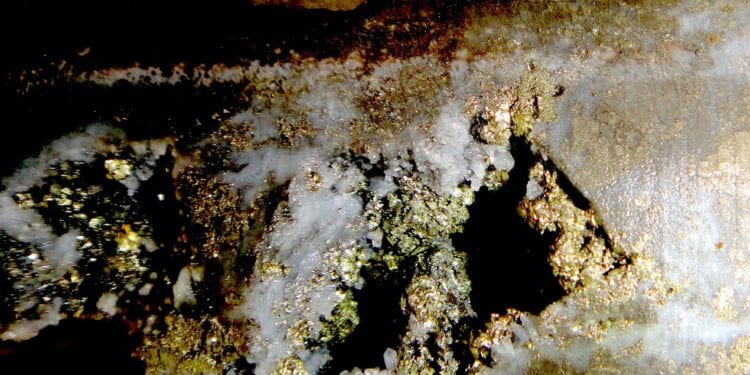Intersects 7.0m Averaging 15.06 g/t Au At Target C
Unigold Inc. (TSX-V:UGD) has significantly extended with positive results at Target C in its ongoing exploration drilling at the Candelones Extension deposit, part of the company’s 100% owned Neita Concession in the Dominican Republic.
The company has completed 32 drill holes (10,070 m) of the planned 15,000m programme including nine holes (243m) at the Candelones Main and Connector zone targeting oxide and transition mineralization for additional metallurgical test work. Drilling has moved to test the both the eastern and western extensions of mineralization in sparsely drilled areas.
Chairman and CEO, Joe Hamilton, said that despite some logistical difficulties, drilling is showing promise in identifying future growth opportunities.
“The lack of assay results has hampered the positioning of new drill holes. Our technical teams pivoted to using drillholes to test structural ideas in the gaps between Targets A, B and C while continuing to target the best mineralisation in the footwall below the andesite-dacite contact.
“The results have not only extended Target C a further 75m to depth but have shown that high-grade mineralisation is possibly down-dropped in this area. These interpretations have given the company new hope for finding more epithermal mineralisation between Targets C and B.
“We have commenced exploration drilling through the 1500m gap west of Target C, towards the Candelones Hill mineralization. We are targeting the interpreted andesite-dacite contact based on recent re-interpretation of the airborne electromagnetic dataset. This area has been sparsely drilled close to surface and the depth potential has never been probed.
“To the east, the area between Target A and B has always shown a lack of significant results. Our latest drillhole suggests that mineralization may also be drop-faulted through this area to depths that are difficult to attain with our current drill fleet.
“Instead we have transitioned to testing the extension of Target A to the northeast where no drilling exists. Our plan is to establish pre-drilled collars to a maximum hole depth of 500m, leave casing in these pre-drilled collars and deepen these holes once our new drills clear Customs and become operational.”
LP20-176 was a step out hole 25m east of the central core of Target C and 75m deeper. It was drilled below and between LP91 (5m averaging 3.01 g/t) and LP16-113 (5.5m averaging 4.08 g/t). LP20-176 intersected mineralisation that was both thicker and higher grade than the two holes above it and also retuned a long intersection of lower grade disseminated mineralization surrounding the core of epithermal sulphides.
LP20-176 returned 64m averaging 1.92 g/t Au, 1.1 g/t Ag, 0.1% Cu and 0.2% Zn including 7m averaging 15.06 g/t Au, 4.43 g/t Ag, 0.5% Cu and 6.3% Zn. Once again, Target C is showing significant silver, copper and zinc accompanying the gold.
At Target B, LP20-155 was drilled to test the down-dip continuity by targeting an area approximately 50m below LP19-135 (24.0m averaging 6.03 g/t Au, 4.9 g/t Ag, 0.3% Cu and 0.7% Zn). Fifty metres beyond the fault zone and deeper in the dacite volcanoclastic unit, a 5.0 meter section of semi-massive pyrite and chalcopyrite averaged 0.18 g/t Au, 1.1 g/t Ag, 0.53% Cu and 0.0% Zn.
While the gold grade was low, the sulphide mineralization in this area was strong and encouraging. This faulting in this hole, along with other holes on this section, seems to imply that Targets A and B are also separated by a fault, with the eastern side down-dropped.












